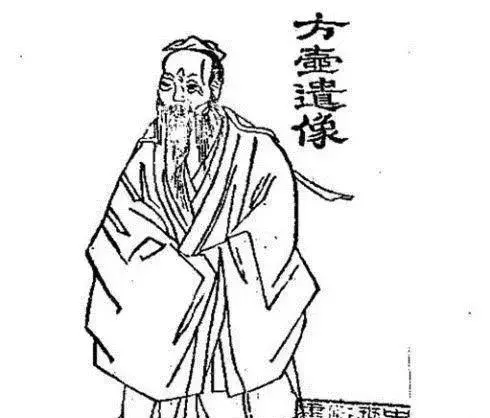
Who is Lu Xixing?
According to the "Chronicle of Xinghua County", "Reconstruction of Xinghua County Chronicle" and the records of His own works on his people and events, it can be known that Lu Xixing (1520-1606 AD), the character Chang Geng, the number of the latent, Yangzhou Xinghua County people. He studied Confucianism less, but failed to pass the township examination nine times. Therefore, he abandoned Confucianism and followed the Tao, immersed himself in the study of Daoist internal alchemy, traveled to famous mountains, and visited the Tao to learn. Shi Zhi records that Lu Xixing was "born with a brilliant personality and an easy talent". Although he abandoned Confucianism and followed the Tao, Lu Xixing did not completely lose his Confucian foundation, but used his Confucian foundation to integrate the three teachings of Confucianism and Taoism. During the Wanli Dynasty, the Zhenming Daoist commented that Lu Xixing was "aware of the Buddha's Dao's second lineage, and let him enter as he pleases..."
Zheng Guan should mention in the "Reprinting of the < Fang Ju Wai History from the Compilation > Zheng Preface": "Mr. Lu Qianxu studied the root of morality, received the dictation of the Immortal Master, deeply compassioned later learning, Hao Shou Poor Scripture, Hao Wu Jinya, often discarded the book and sighed ... • So the oldest and most important books, the Jade Emperor Classic, the Yin Rune, the Tao Te Ching, the Sam Tong Deed, the Hundred Character Song of Lü Zushi, the Qingtian Song of Qiu Zushi, and the Golden Seal Poem of the Dragon Meizi are all measured and sparse, called "Fang Ju Wai History from the Compilation". Its measurement is particularly obvious compared with the annotations of various families, which is enough to be a post-learning Jinliang. "Lu Xixing's Daoist attainments were so profound that later generations revered him as the ancestor of the Eastern Danfa and enshrined his Taoist works as classics.
Although he is regarded as the "ancestor of the Eastern Sect", lu Xixing's inheritance problem is more special. Although his name is Taoist, he actually calls himself a self-proclaimed man. In his lifetime, Lu Xixing never had a teacher-inheritance relationship and a sectarian relationship within the Taoist Sect, let alone lived in the Taoist palace, nor was he a Taoist layman, that is to say, there was no Taoist teacher-inheritance relationship, which was also a more special point. In his lifetime, Lu Xixing never opened a sect or a clear lineage of disciples. Although many people claimed to be disciples of the Eastern Sect, there was no evidence of a direct lineage relationship with Lu Xixing. The descendants of Dongpai Danfa are not recorded in historical sources.
Therefore, in Lu Xixing's life, there was no teacher and no disciple, there was no written record of worshiping teachers and receiving disciples, and even the title of the so-called "Eastern Sect" was not created by Lu Xixing himself, but was named by posterity two hundred years later.
More importantly, Lu Xixing did not create the Neidan Eastern Sect, and the Eastern Sect corresponded to the Western Sect.
Before Li Hanxuan founded the Neidan "Western School", it can be said that there was no mention of the "Eastern School". For example, during the Kangxi Dynasty of the Qing Dynasty, Qiu Zhao'ao and Tao Suyun, two Dan Daoists, who were greatly influenced by Lu Xixing's theory, collected the most theoretical theories of Lu Xixing in their respective annotated "References to the Covenant" and "Wu Zhen", but they also did not see the theory that Lu Xixing founded the Neidan "Eastern School", nor did they regard it as the "Eastern School". The "Complete Book of Lü Zu" compiled by Liu Tishu and others during the Qianlong period of the Qing Dynasty contains the matter of Lu Xixing's "arch pole meeting immortals", but it also does not mention the existence of the "Eastern Sect".
Through research, it can be seen that lu Xixing's identification as the "Eastern Sect" and the honoration of him as the "Ancestor of the Eastern Sect" were established by Li Xiyue of the Qing Dynasty. It is named "Dongpaidan Law" for two reasons:
One of the reasons is that because later generations saw That Lu Xixing lived in the East China Sea around Jiangsu and Zhejiang all year round, they called his Danfa the Eastern Sect;
The more important reason is that Li Hanxuan, the founder of the Western Danfa that originated in Sichuan, has great respect for Lu Xixing, and in order to distinguish the "Western Sect" he founded, he named the Danfa created by Lu Xixing as the "Eastern Sect".
The theory of the Eastern Dan Fa is complete and profound, and since Lu Xixing did not have a disciple who could continue to inherit and develop his Dan Fa, the Eastern Dan Fa was not directly inherited. Historically, what can truly inherit and carry forward the Eastern Danfa thought is the Neidanxi sect that flourished two hundred years later. This historical issue deserves in-depth study.
(Original article of Taoist Voice, reproduced with attribution)